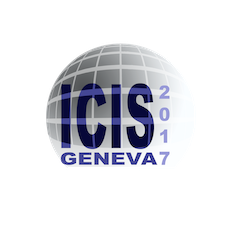Speaker
Description
The crossed electric and magnetic fields configuration inherent to the electrostatic plasma -optical lens (PL) provides a suitable method for establishing a stable gas discharge at the low pressure. Using PL configuration in this way a number of cost-effective and high reliability plasma devices using permanent magnets were devised. These kinds of devices are part of a large class of plasmadynamical devices (Hall-type plasma accelerators, magnetrons, thrusters). All these tools use a gas discharge in crossed electric and magnetic fields with closed electron drift for the generation, formation and manipulation of high current ion beams and dense ion plasma flows [1-3].
This background development opened up a new possibility to use PL configuration for introducing at volume of propagating along axis’s dense low energy ion plasma flow produced by cathodic arc plasma sources or laser- produced plasma sources radially convergent fast electron beam generated self-consistently by ion-electron secondary emission in the near-wall plasma layer from the internal surface of the lens central electrode and serves to evaporate and thus remove microdroplets from the plasma flow. Note that application of the PL to the transport of low energy high-current ion beam can improve the delivery of plasma flow to a substrate, as well as providing microdroplet removal via the fast electrons within the lens region. Some preliminary theoretical studies and experimental tests were carried out at the Institute of Physics, National Academy of Science (NAS) of Ukraine, providing confidence and optimism that proposed idea for microdroplet elimination with application plasma optical systems with fast electrons has good potential for success. Here, we describe and highlight mainly the transport aspect and effect of fast electrons on physical characteristics low energy ion plasma beam.
The experiments were carried out at the High Current Electronics Institute, (Tomsk, Russia) using a PL produced at the Institute of Physics, NAS of Ukraine. A repetitively pulsed cathodic arc plasma gun (i.e., a MEVVA ion source without the ion optic extraction system) combined with PL was used to produce energetically streaming copper plasma. The lens structure includes three cylindrical electrodes with different lengths in a magnetic field formed by permanent magnets. The lens outer electrodes are grounded and the central electrode was biased under different positive and negative potentials.
The experiments described here demonstrate the effectiveness of the electrostatic PL for focusing and manipulating wide-aperture, high-current, low-energy, streaming metal ion plasma flows. In these experiments, the self-sustained focusing of high-density, wide-aperture, low energy ion plasma flow was observed. It has been shown that the presence of fast electrons in the volume of the plasma lens both improves the propagating ion plasma flow towards the substrate and introduces additional energy for effective evaporation and elimination of microdroplets from the plasma flow. These results open up new attractive perspective for further development and application of erosion plasma sources (cathodic arc and laser-produced sources) for the synthesis of exotic films and coatings with controlled given properties.
This work is supported in part by the grants P13/16-17, PL/17 (NAS of Ukraine).
References
[1] Alexey Goncharov Invited Review Article: The Electrostatic Plasma Lens, Rev. Sci. Instrum. 84, 021101 (2013).
[2] A. A. Goncharov Recent development of plasma optical systems (invited) Rev. Sci. Instrum. 87, 02B901 (2016).
[3] A. Bugaev, A. Dobrovolskiy, A. Goncharov, V. Gushenets, I. Litovko, I. Naiko, and E. Oks. Self-sustained focusing of high-density streaming plasma, J. Appl. Phys. 121, 043301 (2017).
